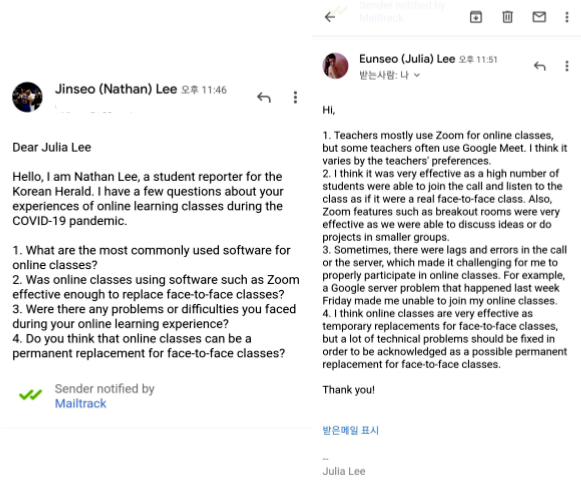Since the beginning of the year, the COVID-19 pandemic has struck over the world. South Korea, one of the first countries to be struck by the disease, was praised by many foreign countries and media sources for their successful response measures to decrease the number of coronavirus cases. According to the Sustainable Development Report, South Korea had the best response to the COVID-19 disease out of all 33 OECD countries, as they successfully addressed the health impacts of COVID-19 while minimizing impacts on the economy. In particular, Korea’s advanced technology was very important for South Korea’s successful response to the COVID-19 pandemic.

At the start of the COVID-19 pandemic, South Korean citizens who visited indoor places with lots of people such as restaurants had to write their names and phone numbers on a sheet of paper. However, this way of recording the visitors’ names and phone numbers caused controversy as everyone’s personal information became public. Privacy issues especially became a hot topic when on September 9th, SBS disclosed that a man was reported to the police for texting a woman using her number that he had obtained from one of the travel logs. Furthermore, on September 23rd, the police announced that a 29-year-old man was arrested for taking a picture of the list of names and phone numbers of the visitors of a restaurant.
To solve these privacy issues, a new system of using QR codes was implemented. According to ZDNet, the Korean government required “high-risk” indoor areas, such as clubs, bars, fitness centers, and karaoke bars to use the QR code system to keep track of their visitors.
People can use apps called Naver or KakaoTalk to obtain their QR codes. When they scan their QR code to a reader, their names and contact information are automatically recorded to the system. A great number of indoor areas, including cafes and restaurants in South Korea, have implemented this system. This system successfully solved privacy issues as the personal information of the visitors weren’t visible to other people.

Another area that technology is actively used in is education. The COVID-19 pandemic caused a lot of schools and businesses around the world to shut down, replacing in-person classes and business meetings with online classes using video meeting software such as Zoom, and Google Meet. The importance of these online video meeting software is evident as Google Meet is gaining two million new users every day and Zoom now has 300 million daily meeting participants. This is a huge increase from having only 10 million meeting participants daily back in December 2019.To gain an understanding of what students thought about online learning experiences, I interviewed Julia Lee, a twelfth-grade student who is attending to Chadwick International. Her school has been using online learning since the second week of February 2020. She said that the teachers mostly used Zoom for online classes, with a small number of teachers using Google Meet. When asked if online video conferencing software such as Zoom was effective enough to replace the face-to-face classes, she said that Zoom had features to mimic in-person classroom environments. One feature, called breakout sessions, allows students to break up into smaller groups for discussions or projects. However, she also added that there were still a lot of technical problems she experienced while using online video conferencing software. For example, she said that she experienced a lot of lags during her calls that made her unable to participate properly in her classes. Furthermore, she said that the Google server problems, such as the one that happened last Friday, made her unable to access her online classes. She expressed that online classes are highly effective as temporary replacements for face-to-face classes, but they will have to resolve all of their technical problems in order to potentially be acknowledged as a permanent replacement for face-to-face classes.
South Korea was able to be recognized by other countries as an example of a country with great responses to the coronavirus because Korea successfully controlled the number of COVID-19 patients and minimized the impacts of the pandemic on the economy. A major factor in this achievement is the use of advanced technology. South Korea used not only QR code visitor logs to track people that are infected without privacy issues but also online conferencing software such as Zoom and Google Meet to provide education during the pandemic.

Jinseo (Nathan) Lee
Grade 9
Chadwick International

